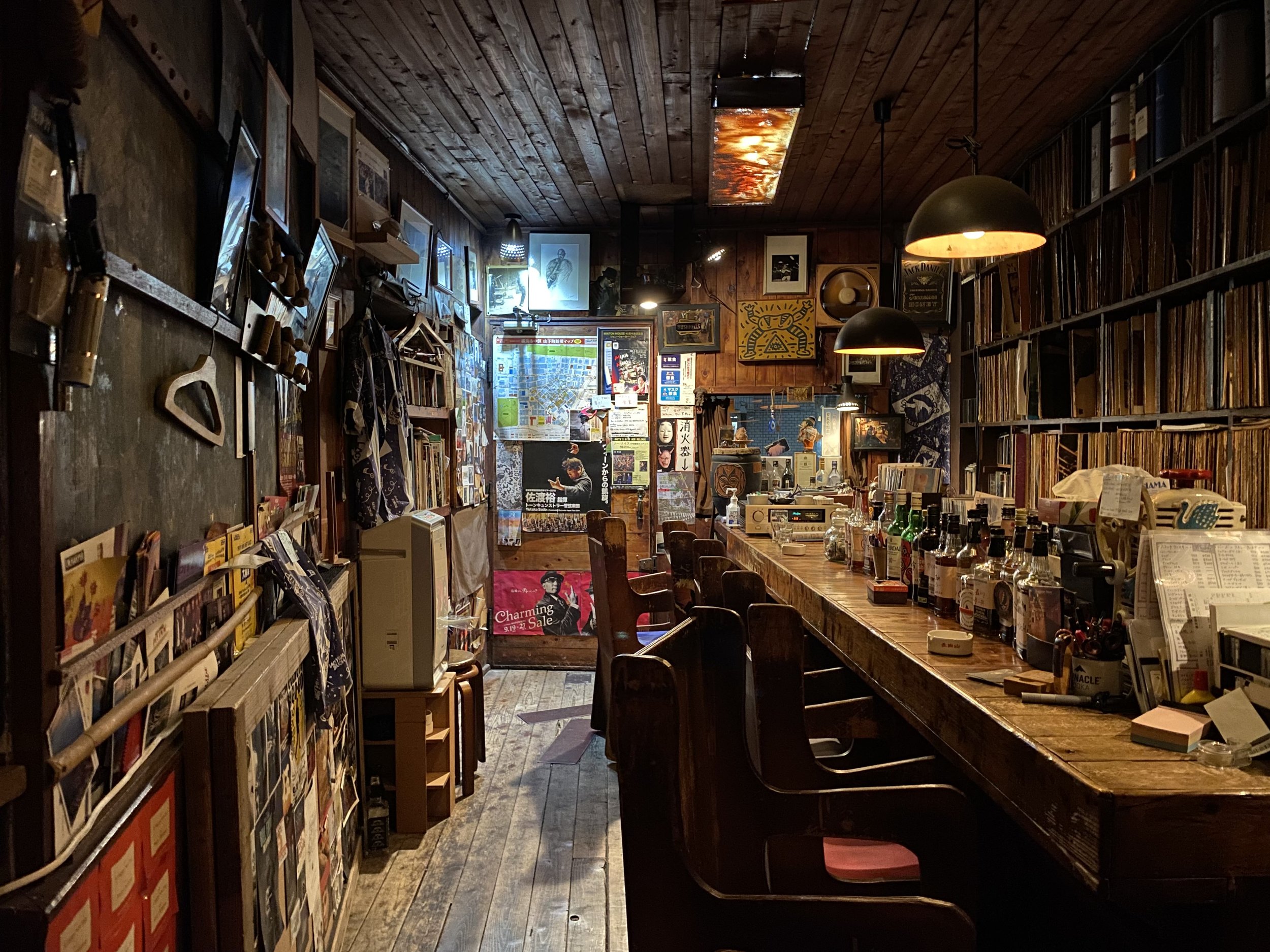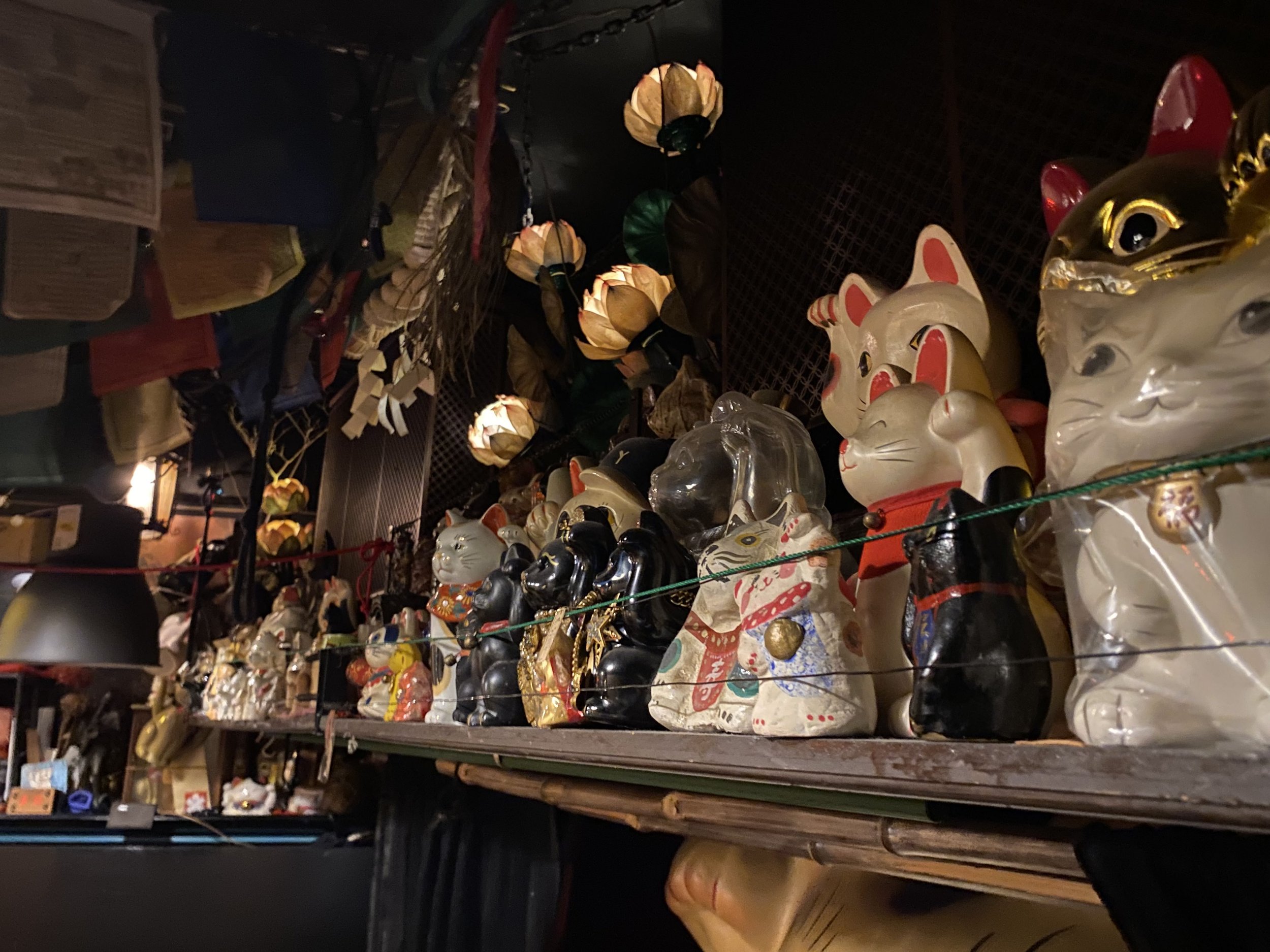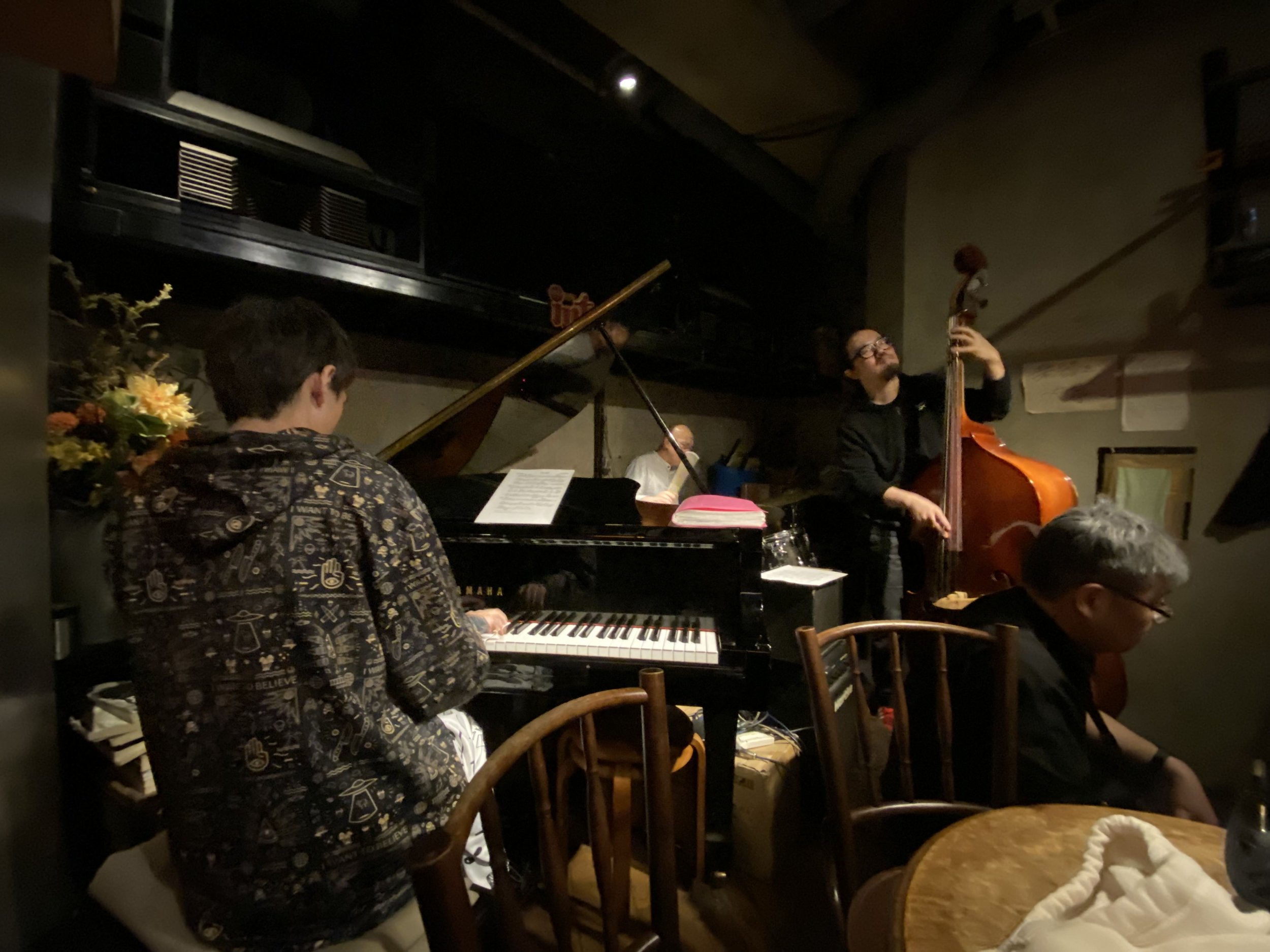Jazz Clubs in Tokyo
This article was written by Dylan Vasquez, HB Woodlawn senior and SJA youth board member of two years.
Jazz is a highly influential and uniquely American genre of music. However, it also has a strong community in Japan. In fact, jazz’s presence is arguably more tangible in Tokyo than in most of the United States. Jazz kissaten (jazz kissa for short) are cafes with a focus on active listening. Visiting these establishments this April has become one of my favorite memories, as I was fortunate enough to have the opportunity to visit Japan for a week to explore the world of jazz kissa further.
Yokohama has no shortage of jazz kissa. Being a port city, it was often the first stop for trade and cultural exchange in the past. Minton House felt like the epitome of a jazz kissa; it was dimly lit with posters and other memorabilia lining the walls in a small, intimate setting. The fresh-pressed orange juice I ordered tasted refreshingly sweet. The owner and I discussed jazz music, and he put on Solo Piano by Sun Ra after I mentioned the artist. The bar itself has been running for 47 years.
Samurai in Shinjuku has a similarly maximalist feel, but the owner’s taste for interior design is vastly different from other jazz kissa I have visited. In addition to jazz-related decorations, spiritual imagery and vintage movie posters blanket the space. However, what makes the cafe truly distinctive is the collection of approximately 3,000 manekineko, some up to five feet in size, populating every nook and cranny. They come in all shapes, sizes, styles, and facial expressions, with artwork depicting manekineko as well. The owner’s taste in jazz is a little left-field as well, as my second visit was set to a John Zorn soundtrack. Another highlight is the expansive menu: there are plenty of snacks and some non-alcoholic cocktail options. I opted for a sausage-mushroom pizza and a cherry blossom lemon squash. The pizza crust was thin and toasty, with a thick and creamy layer of cheese.
Intro in Takadanobaba is the premier venue for jam sessions in Tokyo, and likely all of Japan. Arriving a minute after opening paid off, as the seats filled up within half an hour. Intro seats around 25 people at most, but the allure of the live music created there brings in customers who are willing to stand. The house saxophonist played on an alto with a buttery tone. He played with a subtle finesse reminiscent of Wayne Shorter, not relying on flashy runs or packed passages. Of course, the rhythm section of each song was perfectly synchronized, so it was a surprise hearing the pianist admit that it was his first time seeing a couple of them. I got the chance to play It Could Happen to You, but after my performance quality, I decided I should defer to the more experienced pianists in the room.



